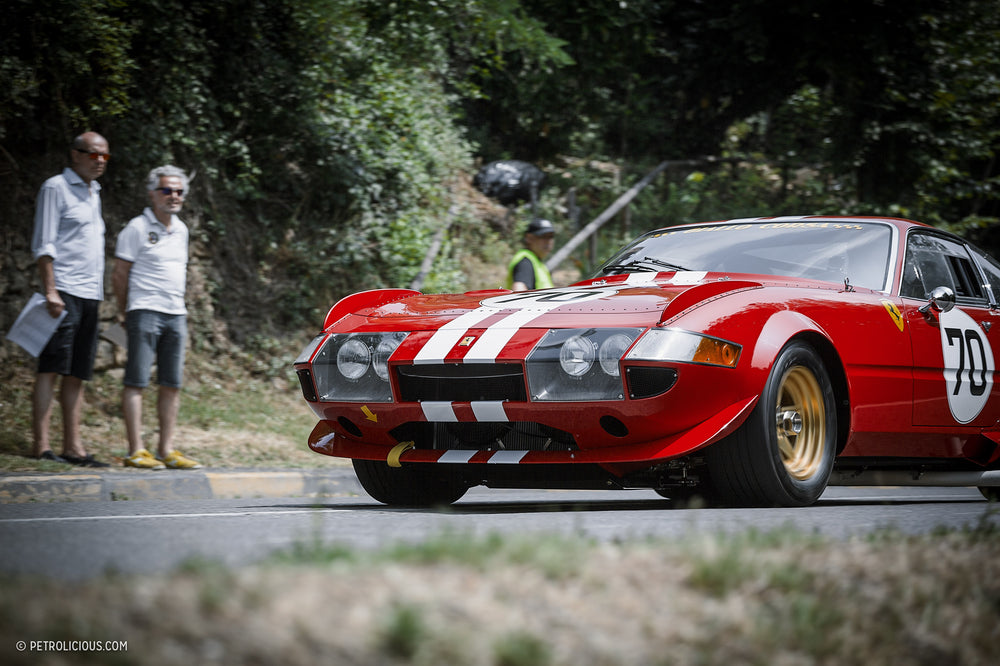If you pick up any automotive history book and read about GT car racing in the 1950s, you'll find yourself dealing with a lot of hillclimb events scattered around Europe, and many of those located in the boot-shaped country. For instance, the Parma-Poggio di Berceto, the Caprino-Spiazzi, the Trento-Bondone, and among countless other fun-to-utter names, the Castell’Arquato-Vernasca, or the “Vernasca Silver Flag.” Of course, these are but some of the names of glorious competitions from the past, which, thankfully over the years, have became all historic events in celebration of their history.
Since the beginning of motorsport, these sorts of events have always been the heart and soul of racing: after all, what's more thrilling than a closed, winding mountain road, where you have the license to drive like a maniac and be cheered on for it? There are bigger and longer and faster races out there, but there is a unique element of these tight hillclimbs that make them somehow more special.




Among them, perhaps the Vernasca Silver Flag holds the distinction of being the single best event capable of assembling a large amount of stunning machinery every year. It’s sort of like and Italian miniature-sized Goodwood Festival of Speed, where legends of the past are driven on one of the best driving roads in Italy not for time, but for style: do not be fooled by the hillclimbing nature of this great event, for the Vernasca Silver Flag is a dynamic concours d’elegance rather than a race. Quite simply, it is an event wherein each car is judged by its looks on the road. It's a winning formula, isn’t it? Cars do not stay parked on some fancy grass lawn, but instead are given a chance to be driven properly while still being displayed.



The original race was held for 17 years, from 1953 to 1972, and this prestigious hillclimb was one of the most important and well-known national events in its day: in this remote region of Italy, south of Piacenza, thousands of spectators used to gather to watch the cars racing on the mountain. The present day event however was first held in 2007, and consists of three hillclimbs: two of them on Saturday, and one on Sunday, culminating with the grand finale with all the cars arriving and put on a display in Vernasca's main square.





No fancy dresses or glamorous parties here though: just racing overalls, hands covered in grease, and a big smile on everyone's faces. This is a true petrolhead event. Pre-war Rileys and Frazer Nashes share the ground with a squadron of Abarth 2000 and 1000 SPs, backed by some old and intriguing open-wheel Formula 3 and Formula 2 cars from the ‘60s, animate the crowd better than any comedian on earth: giant burnouts from a Shelby Cobra 427 and the screams of Giulia GTAs are what it’s all about.



Also, a selection of fine cars from the FCA collection was also participating this year, including a super-rare 1931 Fiat 525SS and the unique Lancia D25, a bespoke racing car made for Formula 1 champion Alberto Ascari in 1954.
For petrolheads, hillclimbs should be at the top of the list for ultimate driving: who doesn't like a twisting elevated road where all you have to concern yourself with is driving to the top of your abilities? I think we need more dynamic concours d'elegance like the Vernasca Slver Flag: after all, who would prefer to stare at a silent racing car? Motoring passion is all about noise and action in addition to the style, and I am glad we're still able to celebrate cars the proper way sometimes.





































































